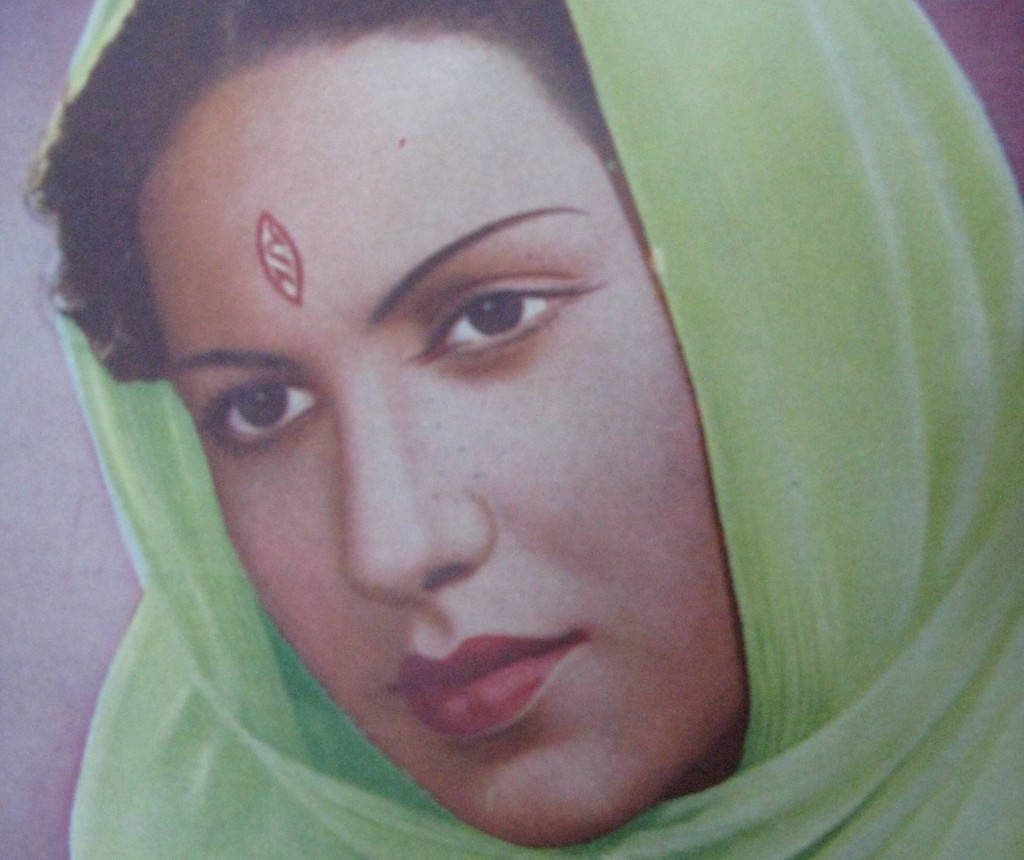Swarnalata was already an established heroine in Hindi cinema before she opted to migrate to Pakistan with husband Nazir, a prominent actor-producer-director, following the partition of India. She also enjoyed a successful career in Pakistan, proving to be a popular leading lady in both Urdu and Punjabi films across the border.
Swarnalata was born in a Sikh family in undivided India. She was spotted at a hostel in Lucknow when she got an offer to act in films. Her initial reaction was to refuse outright but the director, who had spotted her, convinced her brother, who, in turn, convinced her and soon Swarnalata found herself in Bombay.
Swarnalata made her film debut in 1942 with Awaaz (1942). Followed films like Tasveer (1943) and Raunaq (1944) opposite Motilal and Ishara (1943) with Prithviraj Kapoor before she hit the big time with Rattan (1944). Old timers still fondly recall the image of her running after Karan Dewan, who is seated on the tonga, ‘singing’ the most popular song of her career in India and imploring him – Ankhiyan Mika Ke Jiya Bharma Ke Chale Nahin Jana. Rattan was a huge success launching the career of music director Naushad. Ironically, this tale of two young lovers separated when the woman is married off elsewhere was thought to be a commercially risky venture and the original distributors re-sold the film rather cheaply fearing the worst. The rest as they (always) say is history as Rattan became the biggest hit of the year. Another extremely popular song of the film was Sawan Ke Badalon.
Swarnalata played leading lady to Dilip Kumar in only his second film, Pratima (1945), made at Bombay Talkies. The same year saw the release of Preet and Laila Majnu where Swarnalata was cast opposite Nazir in both films. The two fell in love and Swarnalata got married to Nazir and converted to Islam taking on the name Sayeeda Bano. However, she continued to retain her screen name for her films as an actress though she did give her Islamic name as producer. Following her last film Ghar Baar (1948) in India, Nazir and Swarnalata migrated to Pakistan. Recalling the shift, Swarnalata said it was no big deal. Nazir decided they should go to Pakistan so they did! The first film they produced there, Heer Ranjha, ended in tragedy as whatever they shot was out of focus and so the film had to be shelved.
Swarnalata then officially made her debut in Pakistani cinema with Sachai in Urdu and Pheray in Punjabi, both the films releasing in 1949 with her cast opposite husband Nazir in both. Sachai, which unfortunately flopped, also saw Swarnalata become Pakistan’s first ever woman producer. However, Pheray, also directed by Nazir became Pakistan’s first ever silver jubilee hit film! Pheray’s music by the great GA Chishti proved extremely popular especially Mainu Rab Di Sohn Tere Naal Pyaar and Ki Kitta Taqdeer. The team of Nazir-Swarnalata-GA Chishti followed Pheray with Laarey the following year but unfortunately the film did not have quite the same impact even though it was a musically strong film.
After a somewhat lean period with flops like Anokhi Dastan (1950) and Bheegi Palken (1952), Shehri Babu (1953), a Punjabi film, produced and directed by Nazir, proved to be a huge blockbuster with the reigning top star of Pakistani cinema, Santosh Kumar, cast opposite Swarnalata. The film boasted of a superb musical score by Rashid Attre bringing to the fore singer Inayat Hussain Bhatti as an actor besides also featuring Zubaida Khanum’s early hit songs and remains one of the most popular films ever to come out of Pakistan. Swarnalata was now at the peak of her career in Pakistan.
Though not a conventional good-looker, Swarnalata was a more then capable actress besides being a graceful enough dancer as well. In one of her last interviews given on television in Pakistan, she emphatically stressed, “Swarnalata Ka Apna Style Tha. Koi Swarnalata Ko Koi Copy Nahin Kar Saka. (Swarnalata had her own style. No one could copy her).”
Heer (1955) was undoubtedly Swarnalata’s best known and most popular film in Pakistan. Returning to the Heer-Ranjha legend, this Punjabi film, was a huge success at the box office with Inayat Hussain Bhatti and Swarnalata playing the doomed lovers. 1955 proved to be a good year for Swarnalata as she had another big box office hit that year with Nauker, a remake of the Indian film, Aulad (1954). But sadly for her, Heer and Nauker were also to be the last high points of a glorious career.
Post Heer, there was a decline in Swarnalata’s career as films like Sauteli Maa (1956), Sabira (1956) and Noor-e-Islam (1957) made no major impact at the box office. It was not easy. Singing star Noor Jehan was still around and younger heroines like Sabiha Khanum and Mussarat Nazir had begun to rule the roost in Pakistani cinema. The Swarnalata-Nazir combine still came out with the odd film like Shama (1959) and Billoji (1962) but by now, their glory days were clearly behind them.
Swarnalata’s last roles saw her supporting Sabiha and Saloni in Sawaal (1966) and Zeba in Duniya Na Mane (1971) after which she retired gracefully from the silver screen.
Some other films of Swarnalata include Inkar (1943), Us Paar (1944), Shyam Savera (1946), Maa Baap ki Laaj (1946) and Abidah (1947) in India, besides Khatoon (1955) and Azmat-e-Islam (1965) in Pakistan.
Swarnalata passed away in Lahore in Pakistan on February 8, 2008.



Recently I watched Rattan on youtube. Great film with good songs and performance. Shades of Devdas, I guess tragic endings were in vogue at that time